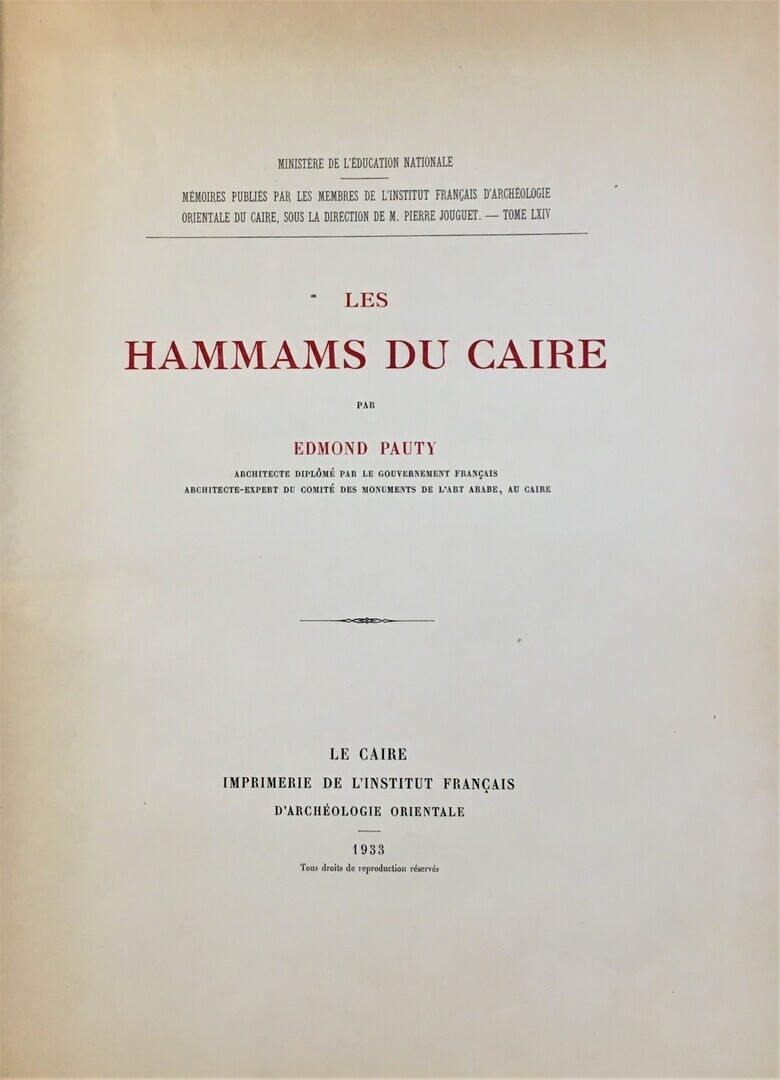Les Hammams du Caire.
Pauty, Edmond.
Synopsis
Rare copy. Edmond Pauty, a French scholar, Orientalist painter, architect and technical expert on the Committee for the Conservation of Monuments in Arab Art.
Some cultures equated cleanliness and self-caring with godliness and associated hygiene with diverse religious beliefs and practices. For instance, personal hygiene and cleanliness in the ancient Egyptian culture were highly emphasised. They were common features of the religious practices and essential parts of the whole culture.
Regarding the numbers of hammāms recorded in Cairo over the last few centuries. According to El Kerdany, Al-Maqrizi (early 15th Century AD) identified 52 hamams which increased to 80 during the 18th century. Whilst the scientists of the French Expedition observed 72 baths in the early 19th century. The Tawfīqī plans “khitat tawfīqīa” of Ali Pasha Mubarak counted 62 hammams. At the time of writing his book (1860), Edward William Lane recognised the number of 60 or 70 functioning hammāms. They ranged between male-only baths, female-only baths or both male/female baths with special times being allocated for each sex, the latter type being the most common. Subsequently, in 1933, Edmond Pauty stated, in MIFAO Vol. 64 on Cairo hammams, that there were around 47 buildings. André Raymond recorded 33 hammams in use in 1969. In 2004, Nicholas Warner documented 17 hammams within the area of Historic Cairo.








